This article was co-authored by wikiHow staff writer, Hannah Madden. Hannah Madden is a writer, editor, and artist currently living in Portland, Oregon. In 2018, she graduated from Portland State University with a B.S. in Environmental Studies. Hannah enjoys writing articles about conservation, sustainability, and eco-friendly products. When she isn’t writing, you can find Hannah working on hand embroidery projects and listening to music.
There are 8 references cited in this article, which can be found at the bottom of the page.
This article has been viewed 30,496 times.
Learn more...
If you’ve been stung by a Portugese Man o’ War (also called a bluebottle), there’s no need to panic: bluebottle stings are very rarely deadly.[1] This marine animal that’s known for its intensely blue hue can sting you while you’re swimming in the ocean or walking around on the beach. Their stings are one of the most painful and intense of all jellyfish-like creatures, so it’s important to start treating the symptoms right away to lower your pain and discomfort levels. If you’re having severe symptoms, like chest pains or shortness of breath, call for emergency services.[2]
Steps
Symptoms
-
1You’ll first notice the sting by a sharp, intense pain. Bluebottle stings are often classified as one of the most painful stings from any jellyfish or siphonophore. Thankfully, the pain usually fades within an hour, but it may ebb and flow until then.[3]
-
2You may notice a red line where the stinger touched you. The mark left by the sting often looks like a string of beads underneath your skin. It might be swollen and itchy, and it may hurt to the touch, but the mark usually fades within 1 to 2 days.[4]Advertisement
-
3Burning, prickling, itching, swelling, and pain are common symptoms. These will probably be most intense right after you get stung. The symptoms usually fade within hours or a few days, especially if the sting was mild.[5]
-
4Cramps, fever, weakness, vomiting, and diarrhea are less common. These symptoms often happen if the sting is severe. You may also experience sweating, faintness, or dizziness. The severity of your symptoms depends on your age, how long you were exposed to the stinger, and how much of your skin is affected. [6]
Treatment
-
1Rinse the area with saltwater and remove the stingers. Saltwater will deactivate the stingers and stop them from injecting more venom into your skin, so do this right away for some relief. Then, put on thick rubber or leather gloves and gently peel the stingers off of your skin. Try to do this as soon as you possibly can to lower your pain levels.[7]
- It’s very important to put gloves on before removing the stingers. If you don’t, you could sting yourself again.
- If you’re having trouble removing the stingers by hand, use tweezers instead.
-
2Soak the affected area in hot water for 20 minutes. This will help soothe your skin and reduce pain, swelling, and inflammation. Make sure the water is between 110 and 113 °F (43 and 45 °C) so it feels hot but not scalding.[8]
-
3Use an ice pack every 2 hours. Wrap an ice pack or a bag of ice in a towel and press it against the affected area for 20 minutes at a time. You can do this 3 to 4 times per day for the next few days to reduce the pain and swelling.[9]
-
4Reduce your pain with oral antihistamines. Medication containing diphenhydramine can help reduce itching, swelling, and pain. You can find these medications over-the-counter at most drug stores and pharmacies.[10]
- If you have glaucoma or prostate issues, talk to a doctor before taking antihistamines.
-
5Get medical attention if you have a severe reaction. If you experience cramps, fever, weakness, vomiting, or diarrhea, you might need medical treatment. Severe reactions like these can indicate an allergic reaction, so it’s important to get help as soon as possible.[11]
-
6Avoid rinsing with vinegar or urine, which could make the sting worse. These common at-home remedies are often recommended for washing jellyfish and siphonophore stings; however, studies have shown that vinegar, urine, baking soda, and shaving cream can actually intensify your pain levels.[12]
- You should also stay away from rinsing with alcohol or ethanol, since those can make your pain worse.
What to Expect if You Get Stung
-
1Bluebottle stings usually heal within a couple of days. Keep practicing at-home care, like using ice packs and taking oral antihistamines. The pain and swelling will most likely go down after a few hours or a few days.[13]
-
2You might have a recurring rash for up to 6 weeks. This is especially true if your sting was severe. If you have a rash that lasts for more than 6 weeks, talk to your doctor.[14]
More Information on Man O' Wars
-
1The bluebottle is actually a siphonophore, not a jellyfish. Siphonophores work together in colonies to swim, eat, and reproduce. This means that when you see one bluebottle, you’re most likely going to see a group of them not far behind.[15]
- Siphonophores are closely related to jellyfish, which is why they look so similar.
-
2You can recognize a bluebottle by it’s blue, gaseous sac. The sac floats up to the water’s surface, so you can spot a bluebottle when they’re in the water. When they’re washed up on shore, bluebottles often look bright and iridescent.[16]
-
3Bluebottles are common in tropical and subtropical seas. They’ll often float in groups of 1,000 or more in the Indian and Pacific Oceans. Bluebottle stings are very common during the summer in Australia, since strong winds carry them to the shore of sandy beaches.[17]
-
4Touching a bluebottle tentacle causes it to release its stinger. If you brush up against it in the water, you’ll feel the pain almost immediately. Touching the top of a bluebottle is okay, as long as you stay away from the tentacles on the bottom.[18]
Prevention
-
1Check your local beach for warnings before swimming. If the report says that bluebottles are in the area, try to avoid it until further notice. Remember: they’re most common in the summer and during strong tides.[19]
-
2Don’t touch dead bluebottles. They can sting you even if they’ve been dead for weeks! Watch where you’re walking on the beach, and give washed-up jellyfish and siphonophores a wide berth.[20]
Warnings
- If you experience loss of consciousness, shortness of breath, or chest pain, call emergency services right away.[22]⧼thumbs_response⧽
References
- ↑ https://oceanservice.noaa.gov/facts/portuguese-man-o-war.html
- ↑ https://www.mayoclinic.org/diseases-conditions/jellyfish-stings/diagnosis-treatment/drc-20353290
- ↑ https://www.ncbi.nlm.nih.gov/pmc/articles/PMC3773479/
- ↑ https://www.ncbi.nlm.nih.gov/pmc/articles/PMC3773479/
- ↑ https://www.healthdirect.gov.au/jellyfish-stings
- ↑ https://www.mayoclinic.org/diseases-conditions/jellyfish-stings/symptoms-causes/syc-20353284
- ↑ https://www.fairview.org/sitecore/content/Fairview/Home/Patient-Education/Articles/English/p/o/r/t/u/Portuguese_ManofWar_Sting_116430en
- ↑ https://www.healthdirect.gov.au/jellyfish-stings
- ↑ https://www.fairview.org/sitecore/content/Fairview/Home/Patient-Education/Articles/English/p/o/r/t/u/Portuguese_ManofWar_Sting_116430en
- ↑ https://www.fairview.org/sitecore/content/Fairview/Home/Patient-Education/Articles/English/p/o/r/t/u/Portuguese_ManofWar_Sting_116430en
- ↑ https://www.fairview.org/sitecore/content/Fairview/Home/Patient-Education/Articles/English/p/o/r/t/u/Portuguese_ManofWar_Sting_116430en
- ↑ https://www.mdpi.com/2072-6651/9/5/149/htm
- ↑ https://www.fairview.org/sitecore/content/Fairview/Home/Patient-Education/Articles/English/p/o/r/t/u/Portuguese_ManofWar_Sting_116430en
- ↑ https://www.fairview.org/sitecore/content/Fairview/Home/Patient-Education/Articles/English/p/o/r/t/u/Portuguese_ManofWar_Sting_116430en
- ↑ https://oceana.org/marine-life/corals-and-other-invertebrates/bluebottle
- ↑ https://oceana.org/marine-life/corals-and-other-invertebrates/bluebottle
- ↑ https://oceana.org/marine-life/corals-and-other-invertebrates/bluebottle
- ↑ https://www.mayoclinic.org/diseases-conditions/jellyfish-stings/symptoms-causes/syc-20353284
- ↑ https://www.fairview.org/sitecore/content/Fairview/Home/Patient-Education/Articles/English/p/o/r/t/u/Portuguese_ManofWar_Sting_116430en
- ↑ https://oceanservice.noaa.gov/facts/portuguese-man-o-war.html
- ↑ https://oceanservice.noaa.gov/facts/portuguese-man-o-war.html
- ↑ https://www.fairview.org/sitecore/content/Fairview/Home/Patient-Education/Articles/English/p/o/r/t/u/Portuguese_ManofWar_Sting_116430en
-Step-6-Version-2.webp)
-Step-2-Version-3.webp)
-Step-3-Version-3.webp)
-Step-4-Version-5.webp)
-Step-10-Version-2.webp)
-Step-6-Version-5.webp)
-Step-7-Version-3.webp)
-Step-8-Version-3.webp)
-Step-9-Version-3.webp)
-Step-10-Version-5.webp)
-Step-15-Version-2.webp)
-Step-12-Version-3.webp)
-Step-13-Version-3.webp)
-Step-14-Version-3.webp)
-Step-15-Version-5.webp)
-Step-16-Version-2.webp)
-Step-17-Version-5.webp)
-Step-18-Version-2.webp)
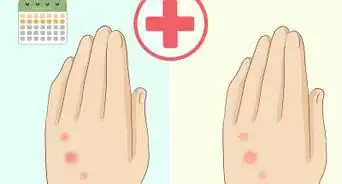

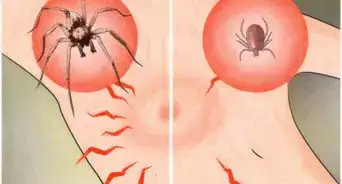


















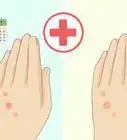
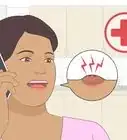
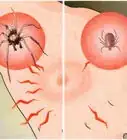




































Medical Disclaimer
The content of this article is not intended to be a substitute for professional medical advice, examination, diagnosis, or treatment. You should always contact your doctor or other qualified healthcare professional before starting, changing, or stopping any kind of health treatment.
Read More...